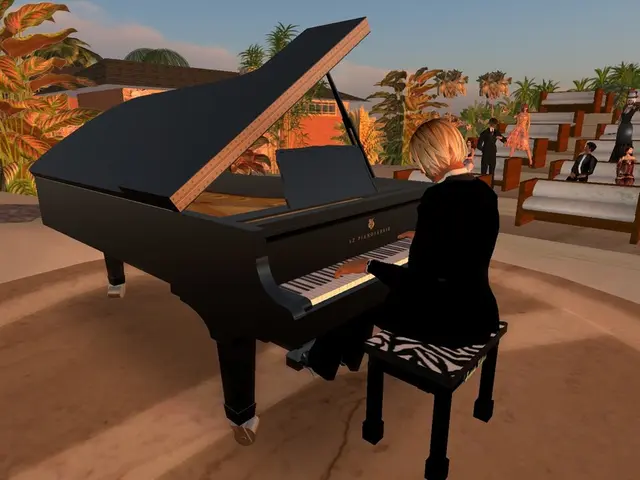Transformation Through Time: A Look at the Progression of Music Videos
In the era of viral videos, the convergence of music, fashion, and visual arts is a trend that's taking the world by storm. Artists are collaborating with influencers and creators, creating a unique blend of creativity and innovation.
This trend isn't new, though. The history of music videos dates back to the 1920s, when the concept of combining music and visuals was first introduced. Fast forward to the early 1980s, and MTV launched as a dedicated music video platform, transforming music videos into a central element of music promotion and marketing. MTV played a crucial role in popularizing music videos worldwide, significantly shaping the music video market and artist fame.
As we move into the digital age, music videos continue to play a crucial role in the music industry. Platforms like YouTube and Vevo provide a global stage for artists to showcase their work, reaching millions of viewers across the globe. Social media and user-generated content platforms like TikTok and Instagram are also used by artists to reach new audiences and engage with fans.
Advancements in technology are revolutionizing the way audiences experience music videos. Virtual reality (VR) and augmented reality (AR) are poised to change the game, offering immersive and interactive experiences that take viewers beyond the screen. AI-powered tools can analyze visual data to create personalized and adaptive viewing experiences, making music videos more engaging than ever before.
The internet has transformed the distribution and consumption of music videos, leading to an explosion of viral videos. Iconic music videos have become a part of our cultural history and have left a lasting impact on society. From Michael Jackson's "Thriller" to Beyoncé's "Formation", these videos have shaped fashion trends, dance styles, and influenced the way we consume and interact with music.
In this digital age, artists are exploring new formats such as 360-degree videos and interactive live streams. A new breed of DIY directors and visual artists are using digital platforms to create innovative and shareable content. The era of viral videos has blurred the boundaries between music videos and other forms of visual content.
Music videos have become a crucial part of marketing and promotion for new music releases. They provide artists with a powerful visual medium to promote their music and connect with their audience. Music videos have become an essential part of an artist's brand and are a key tool for reaching and engaging with fans.
In conclusion, the evolution and revolution of music videos in the digital age are a testament to the power of creativity, technology, and the human spirit. From the simple performance-based videos of the past to the elaborate, cinematic productions of today, music videos continue to shape popular culture and influence the way we consume and interact with music.
Read also:
- Mohammad Yousuf publically labeled Suryakumar Yadav as a "pig," an unusual slur Yousuf explained.
- Today's most impactful photographic moments
- Support for Eric Adams in The Post's Letters to the Editor on August 13, 2025
- Roosting Shark and Rambunctious Red Squirrels: Unconventional House Rental in Yorkshire Involving Aquatic Marvel, Squirrely Mayhem, and Mystical Planning Regulations







